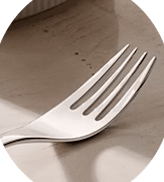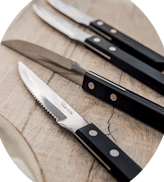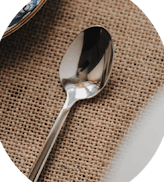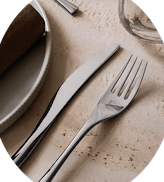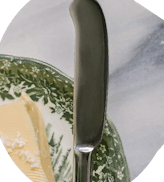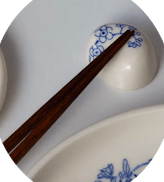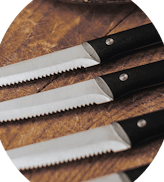Cutlery
Finding the Perfect Cutlery for Your Kitchen
A kitchen is the heart of every home, and every great kitchen will have a collection of cutlery that complements it. Great cutlery start with the basics: knives must be sharp and safe to use, and forks and spoons must be comfortable and practical.
It doesn’t end there though. Your cutlery must also reflect the designs and colors of your kitchen. They should blend in and harmonize with the tableware, countertops and cabinets. For instance, stainless steel silverware like our assortments from Lexington or Villeroy & Boch work wonderfully in kitchens with contemporary and modern décor, especially if they are equipped with modern stainless steel appliances and large glass windows.
The age of your family should also be taken into consideration. A family with young children might be more comfortable with plastic cutlery from our Robert Welch collection instead of the fabulous Georg Jensen silverware.
Aside from that, you also have to decide on the type of cutlery your kitchen should have. Most of us probably won’t be dining at Buckingham Palace under the watchful eyes of an etiquette coach anytime soon. Neither are we expected to memorize all the 61 types of spoons. However, it probably wouldn’t hurt to be familiar with some of the most popular types of cutlery around today.
Type of Spoons
There are literally several dozen varieties of spoons out there, but familiarity with the following five types of spoons will be more than enough to help you navigate any formal occasions.
First up are tablespoons. This is the most common type of spoons used today. They are typically used for meals for all occasions. This is followed by serving spoons, which are large cutlery used to transfer food from serving dishes and bowls to plates.
Soup spoons are next. They are easy to recognize since they are shaped like a horizontal ladle for easy sipping. The large surface area helps to cool soups quicker. A larger version of soup spoons, called bouillon spoons, are used for creamier and jellied soups.
For teas and desserts, we have the pragmatically named tea and dessert spoons. The former, which are sometimes referred to as coffee spoons, are used to stir tea or coffee cups while the latter are perfect for slicing and scooping up desserts like cakes, pastries and puddings.
Type of Knives
There are literally several dozen varieties of spoons out there, but familiarity with the following five types of spoons will be more than enough to help you navigate any formal occasions.
First up are tablespoons. This is the most common type of spoons used today. They are typically used for meals for all occasions. This is followed by serving spoons, which are large cutlery used to transfer food from serving dishes and bowls to plates.
Soup spoons are next. They are easy to recognize since they are shaped like a horizontal ladle for easy sipping. The large surface area helps to cool soups quicker. A larger version of soup spoons, called bouillon spoons, are used for creamier and jellied soups.
For teas and desserts, we have the pragmatically named tea and dessert spoons. The former, which are sometimes referred to as coffee spoons, are used to stir tea or coffee cups while the latter are perfect for slicing and scooping up desserts like cakes, pastries and puddings.
Type of Forks
Forks have been used from as far back as 5,000 years ago in ancient Egypt. Even the Bible made a passing reference to forks (1 Samuel 2:13). Strangely though, their adoption into Western cutlery came quite late owing to objections by religious figures in 11th century Venice – but that’s a story for another day. For now, let’s get ourselves familiarized with the five most important varieties.
Dinners forks are first on the list. They are typically the largest and longest fork on the table. They are used for the main course – sometimes alongside a knife for meat courses. Next on the list are salad forks. As the name implies, you eat salads with a salad fork. Some designs have slightly wide sides to help with slicing vegetables.
If your family enjoys a lot of pasta dishes, spaghetti forks are good options to have. The tines of the fork are sometimes crafted with tiny ridges to help hold the pasta for twirling. Other designs, like our Tibidabo Spaghetti Fork, comes without the ridges, but the fork is extra wide and has double the number of tines (six).
Finally, the last type of fork you should have in the kitchen are fish forks. They are normally used with knives and are the perfect utensil to separate fish meat from fishbone.
Armed with the knowledge above, we hope you have a great time browsing through our catalog of cutlery.

